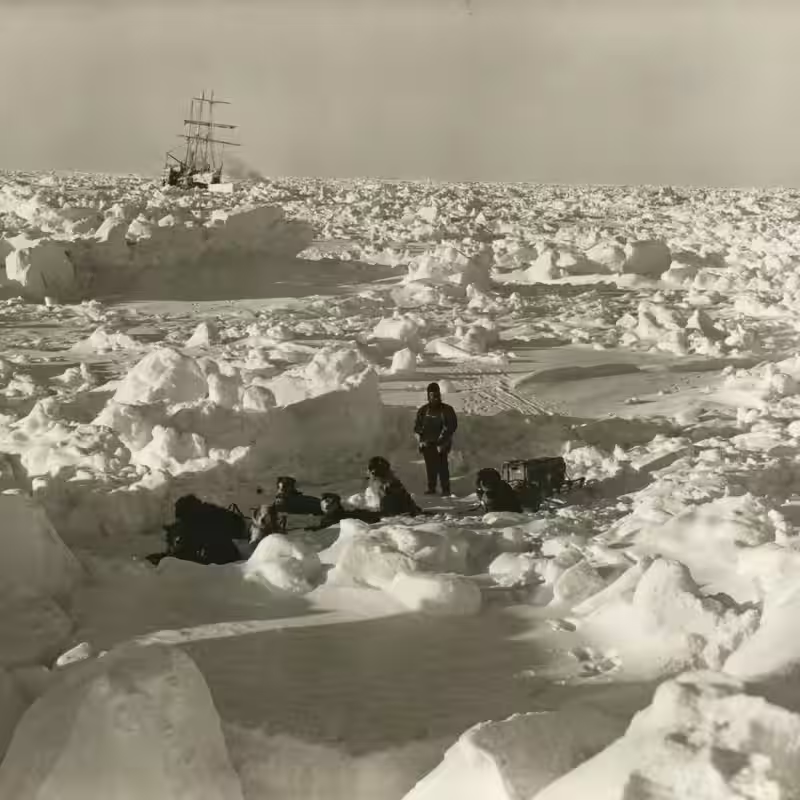For over 100 years, the fate of Sir Ernest Shackleton’s ship Endurance has captivated historians, scientists, and adventurers alike. Now, fresh research suggests the legendary vessel may have been doomed from the start—not by bad luck, but by hidden flaws in its very design and construction .
Endurance’s Final Voyage: A Story Retold
In 1915, during Shackleton’s Imperial Trans-Antarctic Expedition, the Endurance became trapped in pack ice of the Weddell Sea. After months of pressure from shifting ice floes, the ship finally succumbed and sank, stranding its 27-man crew on the frozen wilderness. Miraculously, all survived thanks to Shackleton’s extraordinary leadership.
But why did the Endurance—a vessel specifically built to withstand polar conditions—fail so catastrophically? New analysis of recently recovered materials and historical shipbuilding records is shedding light on a sobering truth: the Endurance sinking may have been less about the Antarctic’s fury and more about overlooked vulnerabilities in the ship itself.
What the New Evidence Reveals
Marine archaeologists and naval historians, working with data from the 2022 discovery of the wreck (found remarkably intact at 3,000 meters deep), have identified critical structural weaknesses. The ship’s hull, though reinforced with greenheart wood—a dense tropical timber—was not uniformly thick. Some sections were significantly thinner than others, likely due to cost-cutting or material shortages during construction in 1912.
Moreover, the ship’s frame used a mix of iron and wood fastenings. Over time in frigid, saline conditions, galvanic corrosion would have weakened these joints, making the hull more prone to cracking under ice pressure.
Endurance Sinking: Design vs. Destiny
“It wasn’t just the ice that sank the Endurance,” says Dr. Elena Marquez, a maritime historian at Cambridge. “It was a combination of heroic ambition and engineering compromise. They pushed the limits of early 20th-century polar shipbuilding—and the margins were razor-thin.”
This doesn’t diminish Shackleton’s legacy—in fact, it makes his survival feat even more impressive. Knowing the ship was fundamentally compromised, his decision to abandon it and lead his men across ice and open ocean becomes an even greater testament to human resilience.
Timeline of the Endurance’s Final Days
| Date | Event |
|---|---|
| January 1915 | Endurance enters heavy pack ice in the Weddell Sea. |
| February–October 1915 | Ship drifts trapped in ice; hull groans under pressure. |
| October 24, 1915 | Hull breaches; water floods lower decks. |
| November 21, 1915 | Endurance sinks completely. |
| March 2022 | Wreck discovered by Endurance22 expedition. |
Why This Discovery Matters Today
Beyond historical curiosity, this new understanding of the Endurance sinking offers lessons for modern polar engineering. As climate change opens new Arctic shipping routes, the balance between cost, materials, and extreme-environment durability remains critical.
Additionally, the pristine condition of the wreck—protected by cold, dark, oxygen-poor waters—provides a rare time capsule of early 20th-century exploration. Researchers hope to use 3D scans and photogrammetry to create digital archives for future study.
Sources
The New York Times: We May Know Why Ernest Shackleton’s Endurance Really Sank
Endurance22 Expedition Official Site
Encyclopædia Britannica: Endurance Ship



